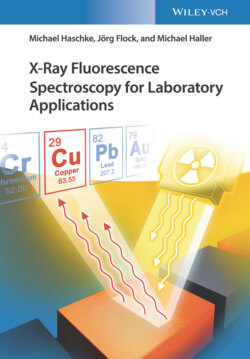Читать книгу X-Ray Fluorescence Spectroscopy for Laboratory Applications - Michael Haschke, Jörg Flock - Страница 21
2.4 Carrying Out an Analysis 2.4.1 Analysis Method
ОглавлениеIn order to carry out an analysis various steps have to be taken starting with asking the right analytical questions – this applies not only to X-ray spectrometry.
In the following discussions, unless otherwise stated, it is assumed that the sampling has already taken place and the material to be analyzed is available; this means that sampling here is not a part of the analysis. The sample material available in the laboratory is called laboratory sample (see DIN-51418-1 2008, Part 2, DIN-51418-2 2014).
For carrying out an analysis it is required to determine the analytical strategy and the analytical method to be used. It is based on the material to be analyzed as well as the analytical task requested, specifically the definition of the elements to be analyzed, the estimation of the concentration range to be detected, and the desired uncertainties. Of course, one must take into account the available equipment and the required time. Therefore the following steps are necessary:
Determination of the type of sample preparation, namely, manufacturing of the measurement specimen from the laboratory sample, taking into account the analytical taskthe parameters that have to be determined with the analysisthe time available for the entire analysis, including preparation, measurement, and data evaluationthe required analytical accuracy
Definition of analysis conditions (e.g. excitation parameters and measurement time) and of the quantification model to be used
Carrying out the measurements on the sample as well as, if necessary, on reference or monitor samples
Qualitative and quantitative evaluation of results
Estimation of measurement uncertainties
Preparation of a report of the analytical results
In the case of unknown samples and high accuracy requirements this process can take up a considerable amount of time; in the case of repetitive measurements on known sample material it is possible to obtain an analysis result in a very short time even with low measurement uncertainties.
The individual steps can be summarized as follows:
The actual measurement includes the determination of the test conditions as well as the measurement of the test sample itself and, if necessary, of the calibration samples with the available analytical technique.Figure 2.11 Steps for an analytical procedure.
The analytical method includes the measurement, sample preparation, and evaluation of the measured data. The analytical method can be used in an identical way for comparable analytical questions.
The analytical procedure includes additionally the sampling procedure and the data processing, namely, the preparation of the analysis report including a possible statistical evaluation of the results.
This situation is demonstrated in Figure 2.11.
The individual steps of an analytical method and their influence on the analysis results are discussed in more detail in the following sections. In addition to the various possibilities of sample preparation, the influence of the analytical technique must be discussed as well. In both cases, the analytical problem itself, as well as the analytical accuracy that is required, has a great influence on their selection.
When performing the measurement itself, the selection of the optimal measuring conditions as well as the processing and evaluation of the spectra, including quantification, is important. Finally, the estimation of the analysis errors and the uncertainties is an important part of an analysis procedure in order to assess the quality of the results. These considerations essentially depend on the respective analytical task.
